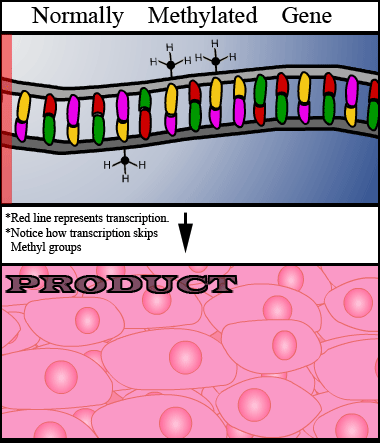Topic Shortcuts:
|
 |
How does this affect us?
Each and every one of our cells have the same genetic material. For example, cells from our skin, mouth, or heart are genetically identical and contain the entire makeup of the human genome. The difference between them is that each gene that a tissue doesn't need is turned off through the use of DNA Methylation. (Citation-1)
Changes in some Methylation patterns are called epimutations.
Epimutations result in a differently expressed gene
Epimutations may even lead to cancer if the genes that play a role in our defense against it is inactivated.(Citation-3)

Histones
|
 (A) Packed and condensed nucleosomes under electron microscope (B) Unpacked and decondensed nucleosomes under electron microscope
|
 |
 |
 |
 |
|  |

